
In this video, NC Virtual educator, Brandi Thurmond, discusses Air Pollution with the aid of a light board.
- Subject:
- Biology
- Material Type:
- Presentation
- Author:
- Darlene Schaefer
- Date Added:
- 04/02/2020

In this video, NC Virtual educator, Brandi Thurmond, discusses Air Pollution with the aid of a light board.

In this series of videos, NC Virtual educator, Brandi, presents on a series of Biology topics with the aid of a light board to present key concepts to students.Standards alignment for each video is included in each video title.Standards and topics include: Bio 2.1 (Bioaccumulation and Biomagnification)Bio 2.2.1 (Air Pollution)Bio 3.1.2 (Transcription and Translation)Bio 3.3 (Characteristics of Living Things)Bio 3.4.2 (Natural Selection)Bio 3.4.3 (Antibiotic/Pesticide Resistance)Bio 3.5.1 (Dichotomous Keys)
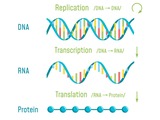
In this video, NC Virtual educator, Brandi, presents on transcription with the aid of a light board to present key concepts to students.
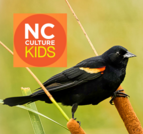
In this short video, join Emily and Emma from the Prairie Ridge Ecostation in Raleigh to take a look at some birds and learn about how we can observe all kinds of wildlife in our everyday lives.

Birth of a Colony explores the history of North Carolina from the time of European exploration through the Tuscarora War. Presented in five acts, the video combines primary sources and expert commentary to bring this period of our history to life. The accompanying teacher guides provide lesson activity ideas, vocabulary, and additional reading resources to compliment each act's theme. The 5 act themes are: First on the Land, The Road to Zacatecas, The Roanoke Voyages, A New Voyage to North Carolina, and , The Tuscarora War.

Birth of a Colony explores the history of North Carolina from the time of European exploration through the Tuscarora War. Presented in five acts, the video combines primary sources and expert commentary to bring this period of our history to life. The opening segment describes the forces that motivated European exploration and colonization of the New World. Explorers and colonists encountered native peoples with agricultural lifestyles, strong communities, and respect for the land. These Indian communities saw themselves as part of nature, and they lived in harmony with the natural world. Their spiritual practices, such as the Green Corn Ceremony, reflected this worldview. The Europeans came to the New World primarily in search of land and riches. With two such different cultural viewpoints, clashes were inevitable. This teacher's guide includes a strictly social studies lesson and a complementary ELA lesson (writing assignment).

Birth of a Colony explores the history of North Carolina from the time of European exploration through the Tuscarora War. Presented in five acts, the video combines primary sources and expert commentary to bring this period of our history to life. Act III of Birth of a Colony presents the story of England?s attempts to settle in the New World. Queen Elizabeth enlisted Sir Walter Raleigh to launch an expedition ?to inhabit and possess? any lands not already claimed by Spain or France. This was part of the global power struggle between Catholic Spain and Protestant England. Queen Elizabeth believed that if England could get a foothold in America, it would be possible to cut off the flow of gold, silver, and sugar that fueled Spain?s domination and threatened England?s security. This teacher's guide contains 2 SS lessons plans: The England of the Roanoke Colonies; The Art of John White. Additional suggested resources are also included. There are optional visual arts extension activities as well. The Birth of a Colony video can be accessed at the following link: http://video.unctv.org/video/2149619983/

Birth of a Colony explores the history of North Carolina from the time of European exploration through the Tuscarora War. Presented in five acts, the video combines primary sources and expert commentary to bring this period of our history to life. Act II of Birth of a Colony focuses on the Spanish exploration and exploitation of the New World and the attempt to find a new route to Zacatecas. Vast wealth from silver enabled Spain to finance more exploration and expand its empire. In an effort to defend Spanish trade and protect Spain?s investment in the mines, King Philip II launched an attempt to establish a colony in North America. This teacher's guide contains 2 SS lessons plans: Finding a Lost Spanish Fort; Mapping Juan Pardo. Additional suggested resources are also included. The Birth of a Colony video can be accessed at the following link: http://video.unctv.org/video/2149619983/ The referenced article can be accessed at the following link: http://www.ncmuseumofhistory.org/collateral/articles/F07.lost.spanish.fort.pdf

Birth of a Colony explores the history of North Carolina from the time of European exploration through the Tuscarora War. Presented in five acts, the video combines primary sources and expert commentary to bring this period of our history to life. Act IV of Birth of a Colony is divided into three parts. The first part explores the development of permanent English settlements in North Carolina. The second part of this segment focuses on the establishment of a proprietary colony in Carolina. The The third part of this segment focuses on the journey of John Lawson from Charleston, through the interior sections of the Piedmont, to the Pamlico Sound. This teacher's guide includes 2 SS lessons: John Lawson, Surveyor; Teaching the Carolina Charter. Additional suggested resources and optional extension activities are also included. The Birth of a Colony video can be accessed at the following link: http://video.unctv.org/video/2149619983/

Birth of a Colony explores the history of North Carolina from the time of European exploration through the Tuscarora War. Presented in five acts, the video combines primary sources and expert commentary to bring this period of our history to life. The final segment of Birth of a Colony discusses the Tuscarora War, the Barnwell Expedition, and the Moore Expedition. ELA extension activities included: writing letters, diary entries, oral histories. The Birth of a Colony video can be accessed at the following link: http://video.unctv.org/video/2149619983/
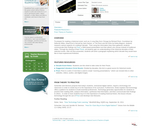
This lesson is designed to help students prepare to read a historical novel. Students are required to complete research pertaining to the work's setting, time-period or decade. Afterwards, students use the online site and software, Prezi, to communicate and share their findings.

A 10-15 lessons (based on time) where students compare / contrast text in literature circles and share jigsawed information using Prezis

This forensics presentation gives an overview of bloodstain pattern analysis and includes instructions for four blood spatter labs . An accompanying student worksheet can be accessed at http://sciencespot.net/Media/FrnsScience/bloodspatter09wkst.pdf. An angle guide needed for the fourth lab can be accessed at http://sciencespot.net/Media/FrnsScience/bloodspatter_angleguide.pdf.
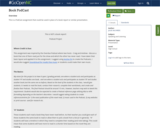
This is a PodCast assignment that could be used in place of a book report or similar presentation.

The Public Service Announcement (PSA) Break Bullying depicts adults in an office environment re-enacting the director?s personal bullying experience from middle school. His point: If we would not stand for this in the office, why do we stand for it happening to kids in schools? It is a call to action for everyone to take bullying seriously. Students and teachers alike are reporting visceral responses to the PSA.

This is a supplemental video that should be used with the "Breaking Bullying: Not in the Breakroom, Not on the Playground" lesson provided by Not In Our Town.

This is a supplemental presentation that should be used with the Breakfast lesson plan. Students will be able to explain the importance of eating a healthy breakfast, discuss heath benefits of eating a well-balanced breakfast, and choose a breakfast consistent with the dietary guidelines.

Part of NCSSM CORE collection: This video shows the collection of data to determine the rate law for the reaction of bromate and iodide ions in acidic solution.
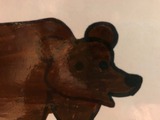
Students will listen to Brown Bear, Brown Bear, What Do You See? by Bill Martin Jr. and Eric Carle to learn color and animal names from the text. Students will complete a sentence frame with teacher support/facilitation, then create their own personal story booklet of the text to reinforce concepts taught and learned. Students will engage in activities such as choral reading of the text and practice independently reading the text aloud to a family member at home for additional independent practice.

This activity can be used as an introduction to spreadsheet. Demonstrating to students the difference between debits and credits as it relates to spreadsheets.